
As the 1920-21 NHL season was on the horizon, there was much wheeling and dealing going on behind the scenes for the Canadiens and the league's three other clubs. The Flying Frenchman had missed going all the way to the Stanley Cup final in 1920, and with a steady lineup filled with experienced players, there wasn't much tinkering that needed to be done to the roster to enable it to remain competitive.

For the NHL as a whole, what it was looking for coming out of World War I's hard times, was to solidify the financial strength of its teams in order to grow the game geographically. The understanding at this particular time, was that the NHL and its clubs were susceptible to an ambush by rival leagues setting up shop in areas in which the NHL wished to expand. The threat of a new league posed by the exiled Eddie Livingstone was taken seriously, and steps were undertaken to roadblock his every move.
BULLDOGS BECOME TIGERS
With that threat in mind, and the Quebec Bulldogs on wobbly legs, the NHL helped its owner Mike Quinn engineer a sale of the team to Hamilton interests. Old foe Livingstone was in fact making inroads for a rival league and the city of Hamilton was a known starting point. To thwart this, NHL president Frank Calder convinced the NHL club owners to fast track a Hamilton franchise by allowing the Quinn sale to go through.
The team would become known as the Tigers, and the league set upon making the team quickly viable by shoring up their lineup with player loans and trades. Montreal and Toronto pitched in to help even out the balance of power and make the Tigers more competitive.
 The Canadiens, Tigers and the St. Patricks swung a three team trade on November 17, and Montreal reaquired last season's holdout Goldie Prodgers and Joe Matte from Toronto for Harry Cameron.
The Canadiens, Tigers and the St. Patricks swung a three team trade on November 17, and Montreal reaquired last season's holdout Goldie Prodgers and Joe Matte from Toronto for Harry Cameron. The Canadiens then sent Prodgers and Matte to Hamilton with Jack Coughlin and loaned Billy Coutu for a season in return for Harry Mummery, Jack McDonald and former Seattle defenseman Dave Ritchie from Hamilton. Toronto also loaned forward Babe Dye to the Tigers, but he was rerturned after one game when St. Pats star Corb Denneny was injured. Mickey Roach was then substituted in the transaction.
It appeared to be a good deal for all three clubs initially, as it looked as though Bulldogs star Joe Malone would have nothing to do with the Tigers. Malone did not sign with the team until 4 games into the season, but still managed 28 goals in 20 games upon his return.
MUMMERY QUITE A CARD
Mummery, who had suited up for the Canadiens during the 1916-17 campaign, would pitch in with 15 goals, and was a fairly strong and regular contributor to the Canadiens cause. Prodgers and Cameron did ever better than Mummery, with 18 goals apiece. McDonald and Ritchie would manage only a goal between the two of them as they appeared in only six games each.
 A hefty defenseman for his day, Mummery often moonlight as a fireman, and had the habit of showing up for games just as the club was preparing to head out onto the ice. When he did arrive well ahead of time, he had the most unique of pre-game rituals, taking five pound steaks in a shovel and cooking them up in a pot bellied stove right in the dressing room. He'd follow that treat up with some apple pie, and wash the whole thing down with a pint of cream.
A hefty defenseman for his day, Mummery often moonlight as a fireman, and had the habit of showing up for games just as the club was preparing to head out onto the ice. When he did arrive well ahead of time, he had the most unique of pre-game rituals, taking five pound steaks in a shovel and cooking them up in a pot bellied stove right in the dressing room. He'd follow that treat up with some apple pie, and wash the whole thing down with a pint of cream. CLEGHORN'S CARVE OUT A REPUTATION
Ottawa attempted to assist the Tigers by sending them Sprague Cleghorn and Harry "Punch" Broadbent, but both refused to report. When Broadbent let it be known that he would rather play with Montreal, which may or may not have been a ruse, his rights were traded to the Canadiens by Hamilton for cash on January 4, 1921. When Broadbent dashed that assignment as well, the Canadiens were left with little choice but to sell him back to the Senators on February 21.


Cleghorn, for his part, was traded to Toronto by Hamilton for future considerations on January 25. The older brother of the Canadiens Odie, Sprague secured his own release from the St. Patricks on March 15, and signed as a free agent with Ottawa. Thus, somewhat unfairly, both Cleghorn and Broadbent were able to help Ottawa remain Stanley Cup champions in 1921. So much for propping up the Tigers!
Less than a month later, Cleghorn was again dealt to Hamilton on April 6, and for a second time, he would refuse to play there.
 CULLY IGNITES FIRST LEAFS-CANADIENS DISPUTE
CULLY IGNITES FIRST LEAFS-CANADIENS DISPUTEAnother new face in with the Canadiens in 1920-21 was forward Cully Wilson, who was loaned to Montreal by the St. Patricks on January 21.
After scoring 6 goals in 11 games for Montreal, Wilson was recalled to Toronto but refused to report. He was suspended for the remainder of the year, and the Canadiens substituted Jack McDonald in return to the St. Pats. He would return to the Canadiens for another 3 games the following year.
Wilson, who came on loan from the St. Patricks after registering only 2 goals in eight games, became the cause of the first of many Montreal / Toronto disputes. While the loaning of Wilson had stipulated his recall could be at any chosen time, Toronto sought to bring hin back just as he was getting hot and helping the Canadiens catch Toronto in second half race for first place.
 With little notice, and only four games left for Montreal on the schedule, the recall was made and Wilson refused the move. An appeal was called, and Toronto failed to attend after the Canadiens had loaned McDonald in his place. Wilson was left for the time being to twist in the wind, suspended and without a team to play for. Meanwhile, Toronto was able to edge out Montreal by two points in the second half standings.
With little notice, and only four games left for Montreal on the schedule, the recall was made and Wilson refused the move. An appeal was called, and Toronto failed to attend after the Canadiens had loaned McDonald in his place. Wilson was left for the time being to twist in the wind, suspended and without a team to play for. Meanwhile, Toronto was able to edge out Montreal by two points in the second half standings.The lone other new face in Montreal in this year was a 24 year old defenseman named Dave Campbell, who appreared in the only two games of his NHL career.
Perhaps the Canadiens lacked the influx of younger talent to the team. With the relative success of recent seasons, the team continued on with a familiar core of players, though some were getting up in years. In 1920, the youngest full time members of the club were 26 year olds Bert Corbeau and Amos Arbour. Goalie Georges Vezina was 34, Newsy Lalonde 32, and Didier Pitre 37.
Pitre contributed 16 goals in 24 contests, but was no longer the dominant force of a few seasons ago. Lalonde however, seemed to be stretching his prime. Now in his fourteenth professional season, he tallied 33 goals and 10 assists which were good enough for his fifth professional hockey scoring title.
NEWSY AS GNARLY AS EVER
All season long, Lalonde battled Toronto's Babe Dye and Ottawa's Cy Denneny for the goal scoring crown, and often all three seemed to become inspired after either of the others notched a big game performance. After a five goal game by Lalonde on February 16 against the Tigers, Denneny replied with a six goal game nights later in Hamilton.
Going into the season's final week, Lalonde and the Canadiens were shutout 1-0 by Clint Benedict and the Senators but Dye was also held scoreless. Newsy would finish a goal behind Denneny and two back of Dye, but would gain the NHL points title on the strength of his ten assists.
 Lalonde, who again in this season, coached the Canadiens as well, continued his hellbent ways on the ice. At times it seemed no tactic would deviate him from his pursuit.
Lalonde, who again in this season, coached the Canadiens as well, continued his hellbent ways on the ice. At times it seemed no tactic would deviate him from his pursuit.An on ice incident in the day, perfectly captures what Lalonde was capable of whn things got nasty. St.Patricks goalie Jake Forbes had it for Newsy in one particular game, after Lalonde, unprovoked, cuffed him a good one straight to the chops while the official was focused elsewhere. With blood gushing from his nose, he made a beeline for Lalonde, only to be halted by referee Copper Smeaton.
A vengeful Forbes later awaited Lalonde, and as he neared the net with the puck, the goalie wielded his paddle high like an axe, readying a two hander for Lalonde's head. Just as Forbes was about to let it swing however, the ever tricky Lalonde spat out a long squirt of tabacco juice at the goalie's face, much to his bewilderment. Lalonde laughing, circled the net and scored into the open side. And so on it went, in the lawless NHL.
Lalonde might not have seen it coming, but his career would begin to wind down after this season. Back in 1906, Newsy's career almost ended suddenly before it began during a game with the Canadian Soo of the International Hockey League. After having injured his leg badly in one particular game, Lalonde reached for a swig of whiskey to numb the pain. Unbeknownst to him, the bottle contained amonia, and it severly burned his mouth and throat. There was quick concern for Lalonde's well being, but what would kill most mortals only seemed to make Newsy spring to life. Later in the same game, he'd tally a pair of goals.
CANADIENS SHOW UP FOR SECOND HALF AGAIN
It had been a strong second half for the Canadiens. After posting a dismal 4-6 record in opening half's ten games, they went 9-5 in the second half's 14 game slice. Scoring only 37 goals as a team to start the season, they doubled that total with 75 down the stretch.
Perhaps it was becoming obvious that there was something inherantly wrong with the split schedule idea. The Senators, defending Cup champions, seemed to appropriate Montreal's method of coming out like lions to win the first half season, before lying down as lambs in the second. The turn seemed for the best, as Ottawa went on the win a second consecutive Cup, despite a 6-8 record in the second half.
 Cummulatively, the second half leading St. Patricks owned the best overall standing, with a record of 15-9. Ottawa stood at 14-10, and Montreal had a 13-11 showing. The reclamationn project Tigers, despite a 5-0 win over Montreal on opening night, never got it in gear, finishing 6-18.
Cummulatively, the second half leading St. Patricks owned the best overall standing, with a record of 15-9. Ottawa stood at 14-10, and Montreal had a 13-11 showing. The reclamationn project Tigers, despite a 5-0 win over Montreal on opening night, never got it in gear, finishing 6-18.Thankfully, 1920-21 would be the last season in which a split schedule would be employed.
One thing is for certain about the NHL in the early 1920's: there surely was no limitations or rules governing how players could manipulate their own destinies.
WEIRD GOINGS ON STILL HIGHLIGHT EARLY NHL
Strange things happened with the Canadiens during this season. While they surely were pleased to have an arena to call home after both the Jubilee and Westmount Arena perished to fire in recent years, such might not have been the case when a warm January 21st brought up the ground surface at the Mount Royal, causing the postponement of a St. Patricks / Canadiens game on that date. Artificial ice beckoned.
One of the owners of the Mount Royal Arena, Tom Duggan, with 6 games remaining in the season's second half, offered the Canadiens players a thousand dollars - meaning roughly a hundred bucks per player - should they overtake Toronto for honours in the second half. The owners of the Canadiens had already promised a $200 bonus per player for the same.
 Ted Day, the owner of the Senators, and Tommy Gorman, the team's manager, became so enfuriated over a goal they felt was offside in a game against the Canadiens on January 26, that they pulled the Ottawa squad off the ice and left. The players were fined, and forced to contribute $500 to the Joe Hall fund. The game was forfeited to the Canadiens, who were leading at the time of the outburst.
Ted Day, the owner of the Senators, and Tommy Gorman, the team's manager, became so enfuriated over a goal they felt was offside in a game against the Canadiens on January 26, that they pulled the Ottawa squad off the ice and left. The players were fined, and forced to contribute $500 to the Joe Hall fund. The game was forfeited to the Canadiens, who were leading at the time of the outburst.At the season's end, the Canadiens second half thrust fell short of their post season hopes. It would be the St. Patricks who would meet up with the Senators in the NHL final. The two game, total goal series was anticlimactic however, as the Senators shut down Toronto in both cities, 5-0, and 2-0. They would square off with the Vancouver Millionaires for the Stanley Cup title.
SENATORS STAY ON TOP
Heading west, the Senators were greeted by a Vancouver throng 11,000 strong, as the Millionaires grabbed game one by a 2-1 margin, Ottawa evened the best of five series in the next game, and took the lead with a win in game three. Vancouver tied the series with a game four win, setting up a "winner take all" for game five.
The Senators Jack Darragh would prove to be the hero once again, netting both Ottawa goals in the Cup clinching 2-1 finale. The Senators reign continued, as they became the first consecutive Cup winners since the 1913 Quebec Bulldogs.

Much of what occured in 1921 pointed to several changes being needed in the game, in the service of fairness. To say the rules needed some tinkering, would be putting it lightly.
Despite the efforts of the league to assist the Hamilton franchise to get off to a strong start, they were league doormats in both halves with 3-7 and 3-11 records. The project of grooming hockey in the Ontario steeltown would get another shot in 1922, but similar results would ensue.

For the Canadiens, it was readily apparent that changes were needed as well. The NHL's oldest team on average - 31 years - needed an injection of a more youthful brand to stay pace with the frontrunners. Owner George Kendall Kennedy, still recovering from illnesses brought on by the influenza epidemic of 1919, had left it other hands to man the club. As his fate worsened in the summer of 1921, the Canadiens fortunes took a back seat. Because of his failing health, events on the Canadiens horizon would force a rebuilding stage to kick in sooner than expected.


.










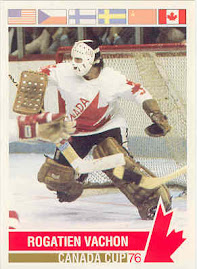
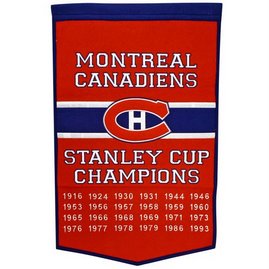







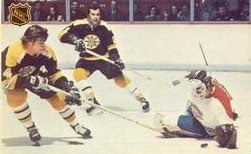



















































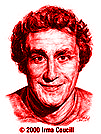



































































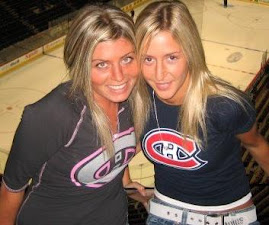


















No comments:
Post a Comment